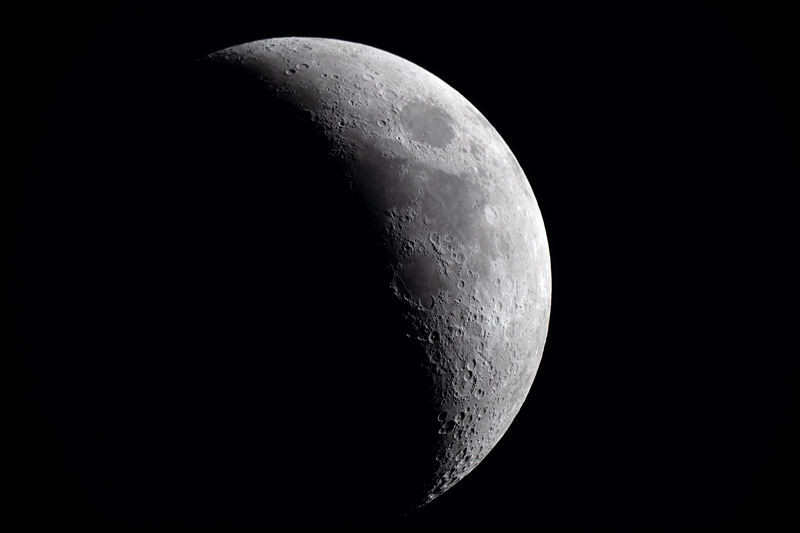Tele Vue 4X Powermate tests;
Sky Astrophotography D850 DSLR + f/1.4 50mm lens
Posted: 18 July 2018
Monday afternoon, 16 July 2018, received 0.8" rain in less than an hour from a slowing moving Monsoon Season thunderstorm that sat on top of Oracle for awhile. Lots of nearby lightning and loud thunder. The local fire department responded to a house and tree fire in Oracle, apparently caused by the lightning.
Early Tuesday morning, 17 July, picked up another 0.04" rain, but the sky began clearing about sunrise with a forecast of mostly clear skies that night. As sunset approached the sky was partly cloudy.
|
Open: Tuesday, 17 July 2018, 1852 MST Temperature: 79°F |
Session: 1263 Conditions: Partly cloudy |
Equipment Used:
12" f/8 LX600 w/StarLock
2" 50mm eyepiece
1.25" 40mm eyepiece
2" 30mm eyepiece
1.25" 26mm eyepiece
2" 24mm UWA eyepiece
1.25" 15mm eyepiece
1.25" 9.7mm eyepiece
2" 9mm 100° eyepiece
1.25" 5.5mm eyepiece
2" 8-24mm zoom eyepiece
1.25" Binoviewer 20mm
2" 4X Powermate
Camera:
D850 DSLR
SYNCed the observatory clock to WWV.
1903 MST: LX600 ON, StarLock OFF, High Precision OFF.
Viewed Venus, 102X and 406X (using the Tele Vue 4X Powermate). Nice views of the slightly gibbous phase.
Then viewed the Moon, 102X.
Next, I began testing all of my eyepieces with the 4X Powermate for my upcoming review.
I finished the visual tests as the sun was setting. This is a D850 DSLR photograph of a storm near Kitt Peak National Observatory taken with my new f/1.4 50mm lens:

1934 MST: sunset.
I then did some lunar observing using the William Optics Binoviewer (20mm eyepieces) + 4X Powermate.
1941 MST: SYNCed on the star Spica.
Viewed Jupiter, 102X and 406X. Four moons were visible.
Seeing was not very good. Humidity was high.
1947 MST: returned to the Moon to image it for my 4X Powermate review.
Here are two images of the Moon:
Prime Focus (1/250sec, ISO 400)

Prime Focus + 2X Powermate (1/320sec, ISO 1600)

(You will have to wait for my review to see the 4X Powermate image.)
2002-2007 MST: clouds hid the Moon.
2018-2040 MST: did imaging of Venus, Jupiter, and Saturn using the 4X Powermate (for the review). Seeing was not good. The storm near Kitt Peak was producing a lot of lightning.
2026 MST: terminated a late season Kissing Bug.
After I completed the planets 4X Powermate imaging I viewed Saturn, 102X and 406X. The view was pretty nice during moments of good seeing even though Saturn was still low in the southeastern sky.
Next, I tried to photograph the lightning to the southwest but by the time I was ready the lightning had significantly decreased. This is a D850 DSLR photo of the storm clouds with stars above (handheld, f/1.4, 1/2sec, ISO 1600, FL 50mm):

This is a handheld D850 photo of the constellation of Cygnus (f/1.4, 1/4sec, ISO 6400, White Balance 4550K). Mouseover (or tap) the image to see the location (red circle) where the candidate red nova star KIC 9832227 is located. The star is predicted to go nova around 2022.

Mouseover or tap on image for labels
2058 MST: clouds in the western sky were increasing.
I took these handheld D850 DSLR photos (f/1.4, 1/4sec, ISO 6400, WB 4550K):
Constellation of Scorpius

Constellation of Sagittarius and the planet Saturn

The Milky Way is visible in both handheld, short exposure photos. Having an f/1.4 lens will be handy for night sky astrophotography. I will be using it more.
2121 MST: Wi-Fi ON. Used the app SkySafari 6 Pro on my iPhone 8 Plus to GOTO Comet 21P/Giacobini-Zinner. A faint coma was visible, 102X. No tail was visible. I had planned to image it but the clouds were now in most of the sky and rapidly approaching the comet's position.
2126 MST: Wi-Fi OFF.
2129 MST: wind began blowing.
2130 MST: LX600 OFF.
2135 MST: the planet Mars was rising over the hill to the southeast. Very bright and orange.
|
Close: Tuesday, 17 July 2018, 2150 MST Temperature: 78°F |
Session Length: 2h 58m Conditions: Mostly cloudy, windy |
Check out the new TMO Background Mode Interview with Amateur Astronomer Mike Weasner.
If you are curious about camera sensor technologies, check out this article: A peek inside Nikon’s super-secret sensor design lab. Frequently mentioned in the article is the Nikon D850 DSLR, which is the camera I purchased earlier this year.
Comments are welcome using Email. Twitter users can use the button below to tweet this report to their followers. Thanks.
Cassiopeia Observatory Home Page
Copyright ©2018 Michael L. Weasner / mweasner@me.com
URL = http://www.weasner.com/co/Reports/2018/07/18/index.html
